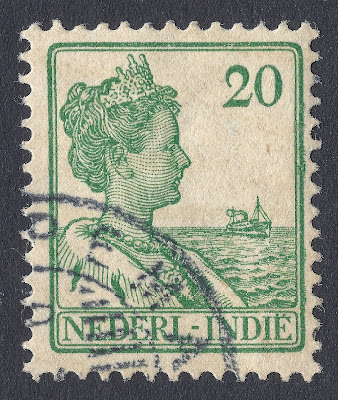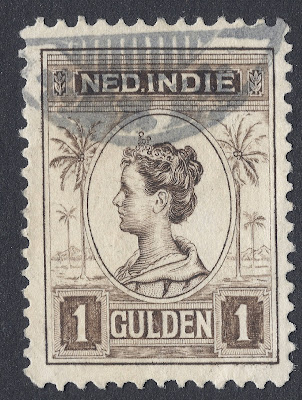 |
| Map of New Guinea with an overview of steamboat connections in 1915, published in Batavia |
 |
| Sukarno in 1949 |
The old colonizer happily proclaimed 'Netherlands New Guinea' as their new colony and transported a small army of dignitaries, officials and soldiers to its new capital which was known as Hollandia and was situated close to the border of Australian territory of Papua and New Guinea. During the early 1950s Australian became a friend of the Dutch regime since it feared a communist led Indonesia bordering its province. Strengthened by this newly gained trust from Western allies, the Dutch government put the idea of handing New Guinea over to Indonesia in the 'refrigerator' as we say in Holland. We shelved the plan.
Sukarno felt obviously belittled over the matter and raised the stakes: he expelled Dutch Indonesians, attacked the Moluccans in 1950 and threatened to stop trade with its former colonizer. From 1957 onward relations between the two countries grew even worse: strikes in Dutch factories in Indonesia, trade bans on products imported from the Netherlands etc. Sukarno did everything to drive the Dutch government to the limit. Together with the under performing New Guinean economy and local resistance made it clear that Netherlands New Guinea wasn't meant to be for the long term.
Tensions reached boiling point in 1959 when a nationalistic government was created in the Hague. Cabinet De Quay was in favour of keeping New Guinea and it made it possible for Dutch conscripts to fight in colonies overseas. This policy made it easier to send troops to New Guinea, which lacked an army of its own. Meanwhile, Indonesia had developed an army which could easily take possession of the last bit of Dutch-possessed land if Sukarno wished. Still, he didn't know for sure how the U.S.A. would react if he dared to make such a bold move. Communis opinio had it that the U.S.A. supported the Dutch cause in this matter....
 |
| De Quay Cabinet bordes scene after Queen Juliana appointed all members by royal decision in Huis ten Bosch Palace - 1959 |
In the end Netherlands New Guinea fortunately saw little fighting between Dutch and Indonesian troops and in early 1962 De Quay made it clear he would like to negotiate with Indonesia about the transfer of power. In the meantime a temporary executive authority led by the United Nations (UNTEA) would be in charge over the former colony. The Dutch left the colony on the 1st of October 1962, Indonesia took possession of it on the 1st of May 1963.
During the short existence of Netherlands New Guinea, it issued its own stamps- some of them were overprinted with UNTEA in 1962. Since not many Dutch officials lived in the colony and many of its native people were illiterate, its postal history is fairly unknown and real (non-philatelic) items are quite scarce. Especially covers from smaller towns and villages are sought after, as well as interesting locations to which covers were addressed. Most of them were sent from its capital, Hollandia, or Biak (airfield) to the Netherlands. Other destinations are quite rare. In my next post I will tell you something about the cover below, which was sent to France!












